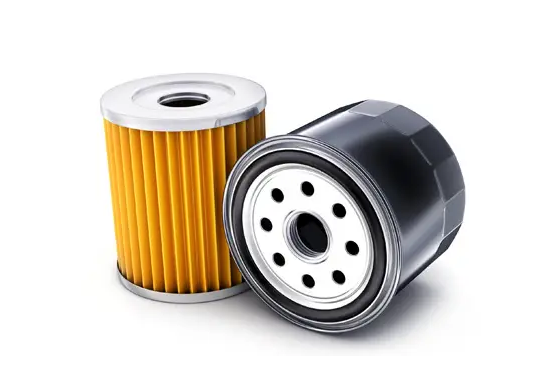

These days, engines have a life expectancy of 200,000 miles or more without a major rebuild, and oil filters play a vital role in helping them last for the long haul.
Unfiltered oil will wreak havoc on an engine over time. Today’s oil filters ensure the oil flowing through the engine is clean and free of abrasive particles that can cause internal parts to wear.
As the oil galleries feed a steady flow of “black gold” to the critical areas of the engine, the oil becomes contaminated with dirt, metals, combustion residue and other material that can be abrasive and harm the oil’s ability to cushion against metal-on-metal contact. The best way to protect the engine – besides regular oil changes – is to install a quality oil filter with every oil change.
There are two types of filters used today: spin-on and cartridge-style.
The spin-on filter is one of the most recognized engine parts, with a steel canister and paper element inside. Spin-on filters are nearly foolproof – especially for the DIYer – due to the simple installation process and minimal need for tools. However, there are a lot more materials and manufacturing steps involved in a spin-on. A spin-on filter consists of several parts, including the steel canister, drain-back valve, bypass valve and a gasket.
Spin-on filters are starting to fall out of favor with OEMs, in part because of environmental concerns. California uses more than 67 million oil filters alone! One way OEMs and filter manufacturers are combatting this growing issue is with cartridge-style oil filters that contain no metal and can be recycled or disposed of easier than spin-ons. But there’s no perfect solution, because cartridge-style filters present some unique challenges to the DIYer and professional technician.
While cartridge-style filters pre-date spin-ons, the trend today is for OEMs to use plastic housings that require special tools to remove them. Wear and tear should be factored into the standard oil change with this type of filter, because the housing is resealed each time the filter element is replaced. If the tech isn’t careful with the housing, damage can occur to the molded plastic. There also is a greater chance that the element can be installed incorrectly or with the wrong-size part. The gasket must be replaced each time, and the threads should be coated to ease the install.
Be sure your customer knows the torque specs and has the specialized tools required for the job. Depending on the location and the size of the element, tools and torque specs will vary. Technicians generally purchase oil-cartridge sockets that cover several sizes, but a DIYer might only buy one, or worse, try to remove the cover with pliers and damage the housing improperly.
One of the most popular benefits of the cartridge filter is that if it’s mounted upright, the filter can be opened and inspected without draining the oil. As for the elements themselves, the performance is the same as a spin-on filter, and there are different types of media available, with pleated paper being the most economical. Synthetic elements contain a weave of different fibers that can filter out smaller particles (as low as 10 microns).
No matter what style of oil filter your customer needs, the quality of the element is what’s most important. Going from a paper element that filters 40 microns to one that filters finer particles can reduce engine wear by as much as 50 percent. But a dirty filter will bypass the element altogether when it’s full, so regular replacement still is the best insurance policy.
Post time: Jun-03-2024





